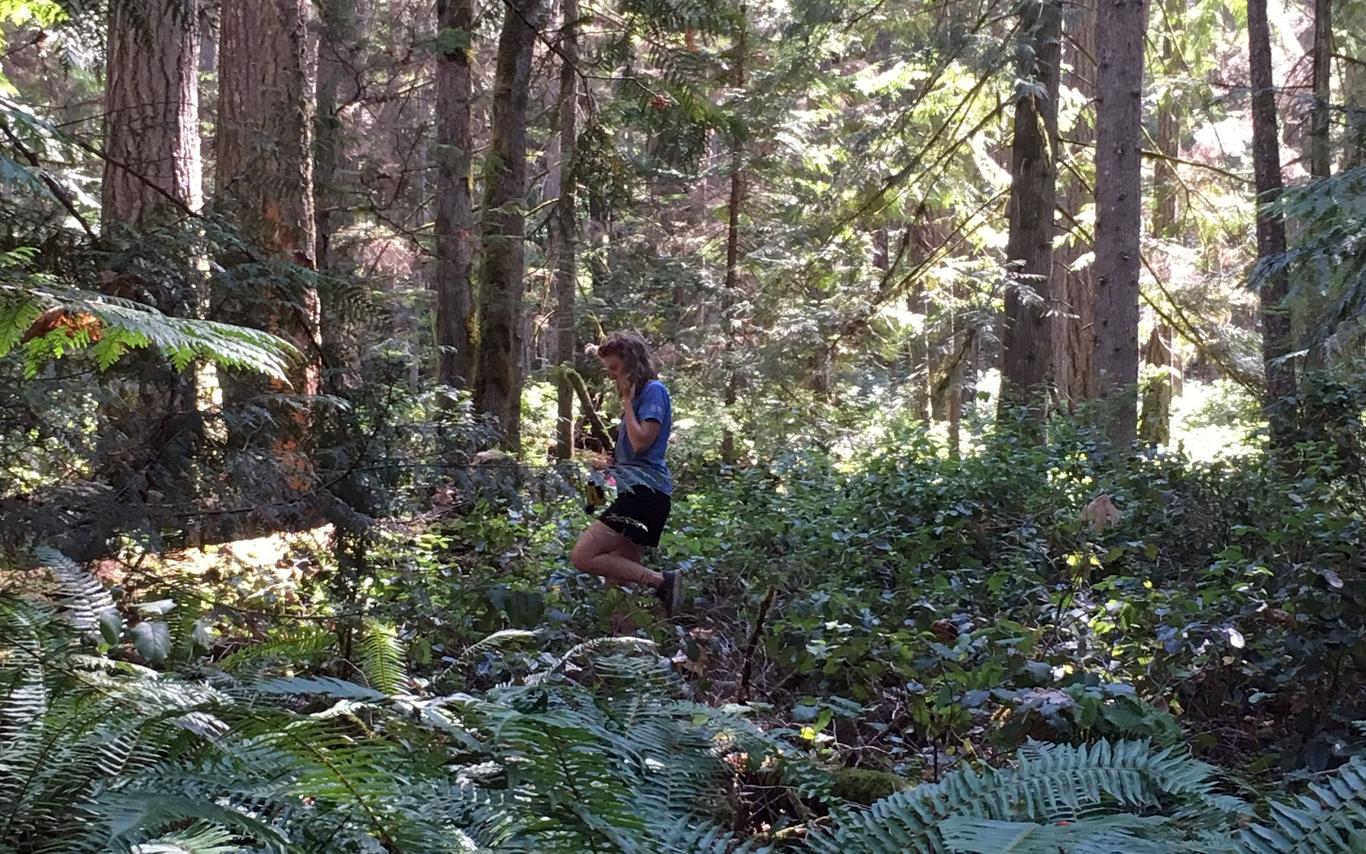Last Friday (August 10th), Kidston, Brian, Chrissy, and I packed up MABRRI’s trusted Dodge caravan and hit the road with our coordinators Haley and Graham. Our destination? Englishman Falls Provincial Park. I want to say that the job we had to do was no easy walk in the park, but it did, in fact, require us to walk in and around said park. Our task for the day was to return to MABRRI’s established EREN plots to measure and record each tree within them. EREN, which stands for Ecological Research as Education Network, is a network of universities throughout North America involving both students and faculty in ecological research and data collection. The aim of this project, titled the Permanent Forest Plot Project (PFPP) is to establish a body of knowledge from a variety of different ecosystems pertaining to biomass, species diversity, invasive species, and carbon sequestering abilities within different ecosystems. There are currently four plots in total, with each one measured in 20m x 20m areas and placed in two different locations throughout the park. Simply put, we got to count trees and while measuring their diameters, actually hug them (with our diameter tapes in hand, of course).
Our first two plots were completed and, quite literally getting off the beaten path, we made our way to the last two to finish up. However, every field day comes with some sort of risk, and in our case, said risk was wrapped in a wasps’ nest. Obliviously, I stepped over a nest while collecting measurements of a tree and Haley had followed up behind to record them. I had moved on, not knowing the chaos I was about to cause, and turned around to see Haley being attacked by the very wasps who I had riled up. Being the courageous leader she is though, Haley was only slowed by the attack, and soon after picked her clipboard back up and returned to the fray to finish the job, thus showing us how to handle adversity in the field. Is this a dramatic re-telling? Probably. Did I feel terrible? Absolutely.
Within each plot, the number of trees, their species, heights, diameters and status (Dead or Alive)* were recorded alongside the dominant flora, invasive species and physical features of the plot. What makes this research rather special is the fact that this data isn’t collected every summer, but only every 5 years and getting to be on the team who got to collect it gave a lot of insight into what larger scale projects like this involve. We were able to look back and realize that our observations really are for the bigger picture. As this data continues to be collected, we will get to see how these plots, and the ecosystems they are in, change over time. Knowing that universities around North America are working together through EREN felt – to put it simply – cool.
*Que Bon Jovi?
